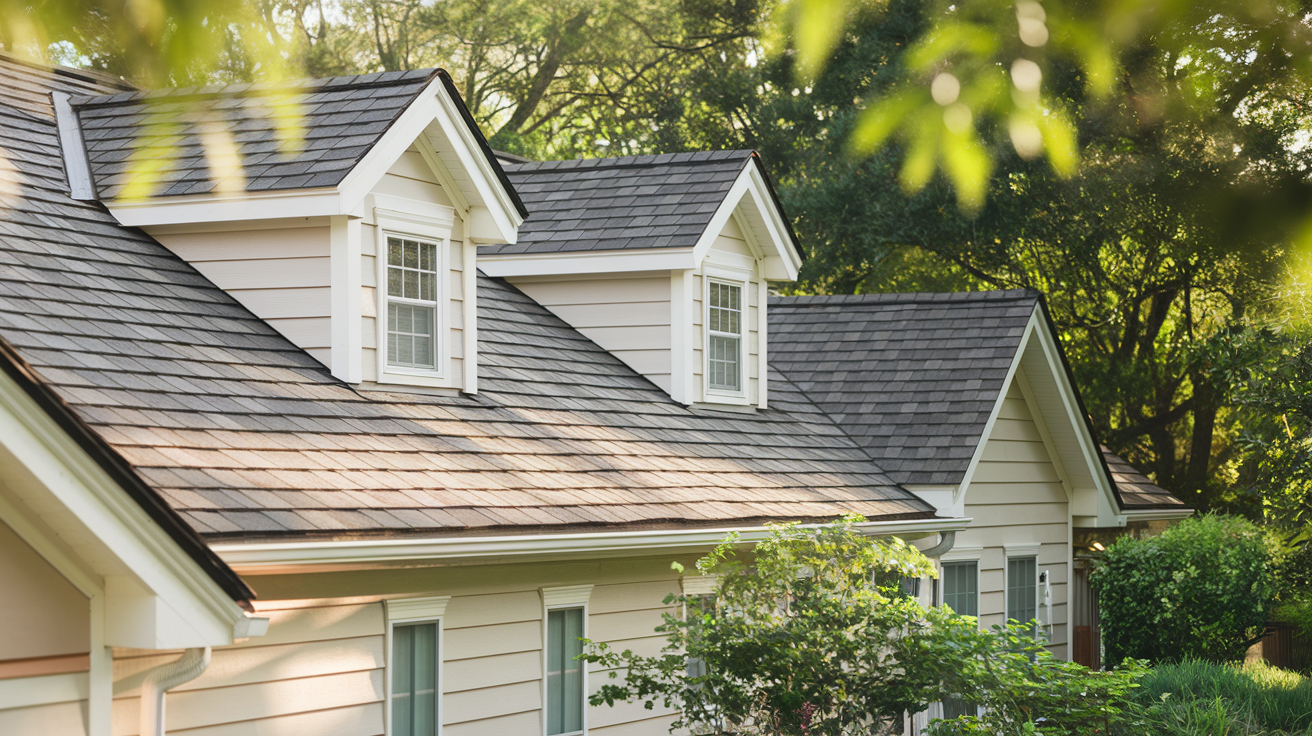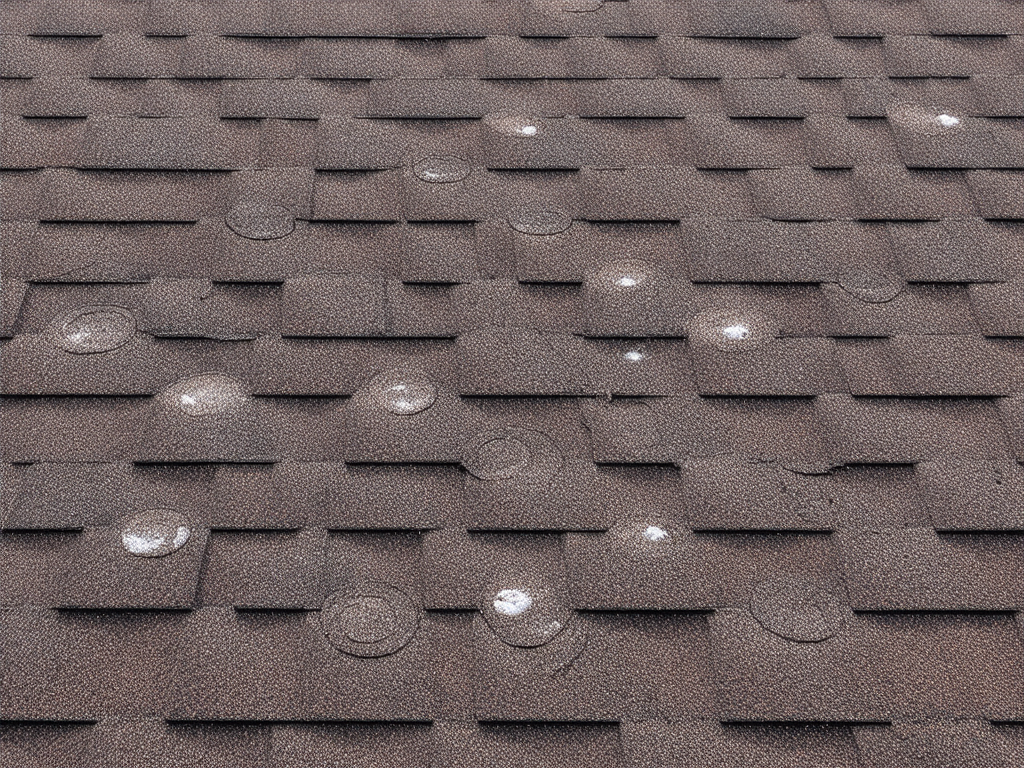Ultimate Guide: How Proper Attic Ventilation Prevents Costly Roof Damage
Is your energy bill climbing while your home feels increasingly uncomfortable? The culprit might be lurking right above your ceiling. Poor attic ventilation affects up to 90% of homes in America, leading to thousands in preventable damage each year. From premature roof aging to dangerous mold growth, inadequate attic ventilation can silently wreak havoc on your home's structure and your family's comfort.
Proper attic ventilation is crucial for maintaining your roof's health and preventing moisture-related issues. When working correctly, it regulates temperature and humidity levels, preventing expensive problems like ice dams in winter and excessive heat damage in summer. Without adequate airflow, your attic can trap moisture from daily activities like cooking and showering, potentially leading to structural damage, mold growth, and higher energy costs.
In this comprehensive guide, you'll discover how to identify ventilation problems before they become costly repairs, understand the best solutions for your climate, and learn practical steps to protect your home. We'll explore everything from choosing the right ventilation system to maintaining optimal airflow throughout the year.
- Importance of Attic Ventilation
- Common Problems Caused by Inadequate Ventilation
- Maintenance and Troubleshooting
- Regional Considerations and Cost Implications
Effective Attic Ventilation Solutions
Ensuring proper attic ventilation is crucial for a healthy roof and a moisture-free home. Good airflow helps regulate temperature and humidity, preventing issues like winter ice dams and summer overheating. Effective ventilation can also prevent costly problems like mold or roof repairs and improve energy efficiency, potentially lowering cooling costs. A well-ventilated attic extends roof lifespan by preventing heat damage and moisture buildup. For instance, proper ventilation prevents premature shingle deterioration from excessive heat. This section explores various ventilation systems, optimal intake/exhaust ratios, and best installation practices. Consider scheduling a Get Your Roof Assessment to identify potential ventilation issues.

Types of Ventilation Systems
Attic ventilation systems come in two main types: passive and active.
Passive Ventilation: Relies on natural airflow, using vents like ridge vents (along the roof peak), soffit vents (under the eaves), and gable vents (at the house's triangular ends). This natural approach is more sustainable, avoiding electricity-powered fans.
Active Ventilation: Systems like powered attic fans mechanically draw in cool air and expel hot air for more climate control. These fans often use soffit and gable vents for intake.
The best system depends on your climate, roof structure, and individual needs. For example, hotter climates may benefit from active systems, while milder climates might find passive ventilation sufficient. To learn more about roof maintenance, explore our resources.
Optimal Intake and Exhaust Ratios
Balanced ventilation, with equal air intake and exhaust, is key for optimal attic performance. This prevents heat and moisture buildup, which can lead to mold or wood rot. A general guideline is one square foot of ventilation per 300 square feet of attic space, split evenly between intake and exhaust. A 1,200-square-foot attic ideally has four square feet of ventilation—two for intake and two for exhaust. Balancing these ratios ensures uniform airflow, reducing hotspots and moisture accumulation. This prevents stagnant air pockets where moisture condenses and causes problems like mold. Keeping intake vents, such as soffit vents, clear is crucial for proper airflow.
Best Practices for Installation
Proper installation maximizes ventilation system effectiveness.
Keep vents clear of debris: Obstructed vents hinder airflow and can lead to costly damage. This includes ensuring soffit vents are free from insulation, which can trap heat and moisture.
Consider environmental factors: Wind and solar radiation impact attic airflow. Wind can help or hinder ventilation, while solar radiation increases attic temperature, influencing passive system effectiveness.
Consult a professional: They can assess your needs, ensure compliance with local codes, and determine the proper ventilation ratio and vent placement. Following these best practices creates a well-ventilated attic, protecting your home and lowering energy costs.

Regional Considerations and Cost Implications
Understanding regional factors and cost implications of attic ventilation improves roof performance and lifespan. Different climates create unique ventilation challenges, affecting installation and maintenance costs. Tailoring your approach to your region optimizes effectiveness and potentially reduces long-term costs. This section explores how climate variations influence attic ventilation requirements and examines the financial aspects.
Climate Impact on Ventilation Needs
Your region's climate plays a crucial role in determining the right attic ventilation system.
Cold Climates: Poor ventilation can cause ice dams, which damage roofing materials and lead to costly repairs. Attic ventilation regulates attic temperature and moisture, preventing this freeze-thaw cycle.
Warm Climates: Proper ventilation removes hot air, reducing strain on cooling systems and preventing heat damage to roofing materials. This maintains comfortable indoor temperatures and lowers energy bills.
Coastal Climates: Unique challenges from wind pressure and solar radiation significantly affect ventilation needs. Wind and solar radiation influence attic airflow rate and pattern. The optimal ventilation design may need adjustments for these forces.
Cost of Installation and Maintenance
Attic ventilation has two main costs: installation and maintenance. Nationally, roof vent installation averages $240 to $600. Most homeowners pay around $450 for a standard installation, like a ridge vent on a two-story house. However, the exact cost depends on several factors, including the ventilation system type, attic size, and roof design complexity.
Maintenance costs are also important. Neglecting maintenance can lead to debris-clogged vents, causing costly damage. These damages could include moisture buildup from showering and cooking, mold growth, and structural damage. Poorly maintained vents can increase moisture, leading to mold and mildew, impacting your roof's structure.
To minimize expenses, schedule regular inspections and cleanings. Learn more about roof maintenance to keep your system working effectively. Ensure optimal airflow—a balanced system with equal intake and exhaust. Proper installation and diligent maintenance avoid expensive repairs and extend roof lifespan, ultimately saving money.

Maintenance and Troubleshooting
Proper maintenance and timely troubleshooting of your attic ventilation system are crucial for protecting your home from moisture damage and extending the life of your roof. This section offers practical guidance on regular inspections, common issues and their solutions, and when to consult a professional. A well-maintained attic ventilation system not only safeguards your roof but also improves energy efficiency and indoor air quality. Consider scheduling a Get Your Roof Assessment to identify potential ventilation issues early.
Regular Inspection Tips
Regular inspections are key to ensuring optimal attic ventilation.
- Visual Inspection: Check your soffit vents for obstructions like bird nests, debris, or insulation. These blockages restrict fresh air intake, disrupting proper ventilation.
Checking for Moisture
Check for dampness or frost, which can signal poor ventilation and potential moisture problems, including mold growth and structural damage. Dampness or frost may indicate a need for improved ventilation. You might need to add more vents or clear existing ones.
Vent Obstructions
Ensure vents aren't covered by insulation or leaves. This can restrict airflow and lead to costly damage like rot, premature shingle failure, and higher energy bills. Ideally, perform these inspections seasonally.
Common Issues and Solutions
Several common attic ventilation problems have straightforward solutions.
Moisture Buildup
Moisture buildup is a frequent issue. Everyday activities like showering and cooking release moisture into the attic. This can cause mold and structural damage. A balanced ventilation system, with equal airflow in and out of the attic, often mitigates this.
Trapped Hot Air
Trapped hot air can shorten shingle lifespan by causing premature wear and tear. Increasing the ventilation ratio or adding more vents can improve airflow and alleviate this issue.
When to Seek Professional Help
While regular maintenance can solve many ventilation issues, sometimes professional help is necessary.
Persistent Problems
If you notice ongoing moisture, mold, or structural damage despite your efforts, consult a professional. A qualified roofing contractor can assess and recommend appropriate solutions.
System Upgrades
If your system is outdated or you're considering a major upgrade, a professional assessment can ensure compliance with building codes and efficiency standards. Professionals can offer a thorough evaluation and suggest tailored solutions.
Common Problems Caused by Inadequate Ventilation
Inadequate attic ventilation can lead to several issues that can become expensive repairs if not addressed quickly. Poor ventilation allows moisture to accumulate, impacting roof health and shortening its lifespan. Understanding these problems will help you protect your home. This section explores the causes, signs, and long-term effects of inadequate ventilation. Consider scheduling a Get Your Roof Assessment to identify potential ventilation problems.
Causes of Moisture Build-Up
Moisture build-up in attics is primarily caused by poor ventilation. Everyday activities like cooking and showering release moisture into the air. This moisture rises and gets trapped in the attic if ventilation is inadequate. Blocked or insufficient vents are a common culprit. Additionally, attic design and orientation influence airflow. Factors like wind pressure and solar radiation play a role.
Signs and Consequences of Moisture Problems
Finding moisture problems early can prevent costly repairs. Common signs include mold, mildew, and water stains. Musty odors and condensation are also indicators. These signs indicate excess moisture and potential damage. These problems can lead to structural damage and health issues from mold exposure. Mold can cause respiratory problems and allergies. Unaddressed moisture can also cause ice dams, damaging roof integrity.
Impact on Roof Health and Lifespan
Roof health is directly tied to attic ventilation. Inadequate ventilation causes uneven roof temperatures. This makes shingles overheat and deteriorate faster in warm weather, shortening roof lifespan. Excessive heat can make shingles brittle and crack. Over time, poor ventilation can lead to significant structural damage and higher energy bills. A balanced ventilation system with equal airflow in and out is crucial.
Importance of Attic Ventilation
Proper attic ventilation is crucial for a healthy roof and home. Without it, you risk costly repairs. Poor ventilation traps heat and moisture, leading to structural damage like wood rot, mold growth, and higher energy bills. This section explains attic ventilation and its role in preventing moisture problems. Consider scheduling a Get Your Roof Assessment to identify potential ventilation issues early.
Understanding Attic Ventilation
Attic ventilation is the constant airflow through your attic. This regulates temperature and moisture. Intake vents, like soffit vents or gable vents, and exhaust vents, such as ridge vents or roof vents, work together to move air. A balanced system, with equal intake and exhaust, removes hot, moist air from everyday activities like showering and cooking. Simultaneously, it draws in fresh air. This balance prevents summer heat buildup and winter moisture buildup.
Key Statistics on Ventilation Issues
Poor attic ventilation has serious consequences. Industry data shows improper ventilation is a common roof problem, causing mold, structural damage, and damaged roofing materials. These issues can cost thousands of dollars to fix. Moisture from poor ventilation rots wood, weakens supports, and warps roofing. The U.S. Energy Department states that poor ventilation increases energy costs, which average around $1,400 annually.
Benefits of Proper Attic Ventilation
Proper attic ventilation does more than prevent moisture. It lowers energy use by reducing AC and heating needs. It also extends roof life by preventing heat and moisture damage that deteriorates shingles, saving money on roof replacements. Good ventilation also improves indoor air quality by removing pollutants and allergens, creating a healthier home. A balanced attic ventilation system creates a healthier, more comfortable home and protects your investment.
Disclaimer: This blog post is intended for informational purposes only and should not be considered professional roofing advice. Always consult with qualified roofing contractors and insurance professionals for specific guidance regarding your individual circumstances.
